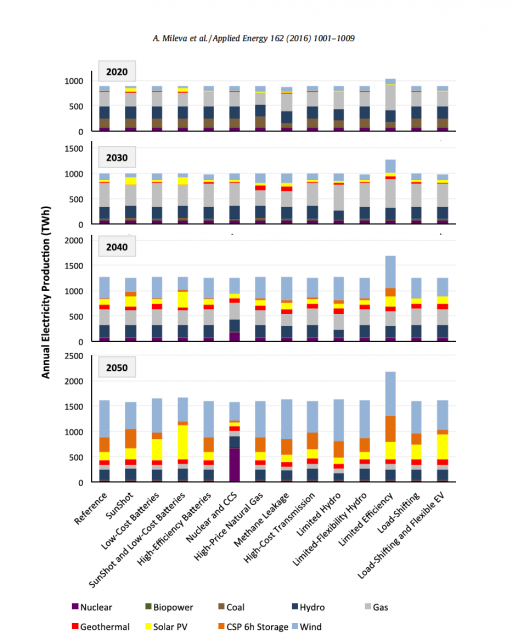We explore the operations, balancing requirements, and costs of the Western Electricity Coordinating Council power system under a stringent greenhouse gas emission reduction target. We include sensitivities for technology costs and availability, fuel prices and emissions, and demand profile. Meeting an emissions target of 85% below 1990 levels is feasible across a range of assumptions, but the cost of achieving the goal and the technology mix are uncertain. Deployment of solar photovoltaics is the main driver of storage deployment: the diurnal periodicity of solar energy availability results in opportunities for daily arbitrage that storage technologies with several hours of duration are well suited to provide. Wind output exhibits seasonal variations and requires storage with a large energy subcomponent to avoid curtailment. The combination of low-cost solar technology and advanced battery technology can provide substantial savings through 2050, greatly mitigating the cost of climate change mitigation. Policy goals for storage deployment should be based on the function storage will play on the grid and therefore incorporate both the power rating and duration of the storage system. These goals should be set as part of overall portfolio development, as system flexibility needs will vary with the grid mix.
PublicationJournal Article Power system balancing for deep decarbonization of the electricity sector
Published:
November 16, 2015
Author(s):
Publication Type:
Journal Article
Associated Projects:
Abstract:
